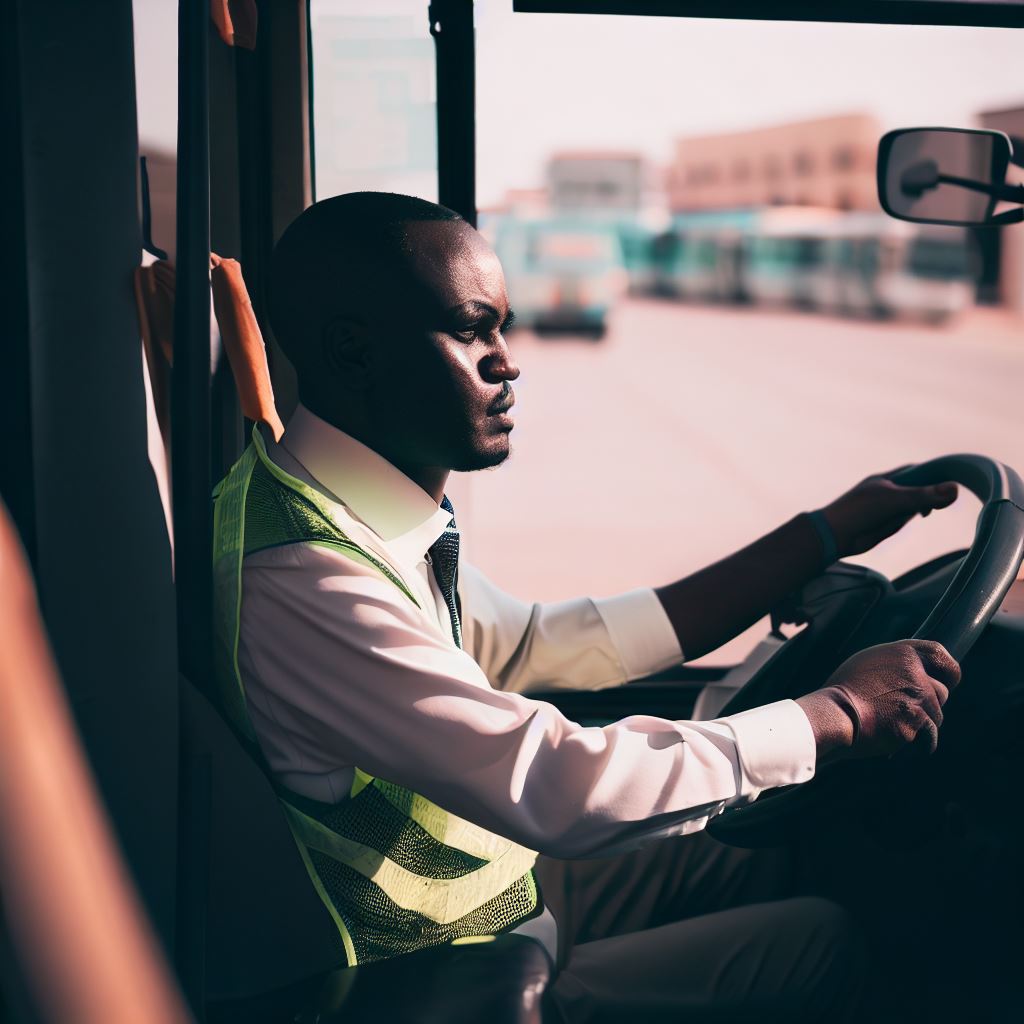Introduction
In Nigeria, the transit system is comprised of different bus fare structures that cater to varying needs and preferences.
In the heart of West Africa lies Nigeria, a nation known for its vibrant culture, stunning landscapes, and a transit system as diverse as its people.
As commuters, understanding the intricacies of Nigeria’s Transit System Bus Fare Structures is essential for seamless navigation.
Nigeria’s transit landscape is a tapestry of buses, minibusses, and shared taxis, each with its unique fare system.
To make the most of your journey, grasp the fundamentals. Bus fares often vary based on factors like distance, route, and even time of day. Peak hours might see slightly higher prices.
Furthermore, Nigeria’s megacities, such as Lagos and Abuja, offer modern bus rapid transit (BRT) systems with prepaid card options, making the process more efficient.
By delving into Nigeria Transit System Bus Fare Structures, you’re taking a significant step towards becoming a savvy commuter in this vibrant and dynamic country.
So, let’s embark on this journey together, unraveling the mysteries of Nigeria’s transit fares.
Overview of Nigeria’s Transit System
Nigeria’s transit system plays a crucial role in the mobility of its population.
With a population of over 200 million people and rapidly growing cities, efficient public transportation is essential for the nation’s development.
A. Brief history of public transportation in Nigeria
- Public transportation in Nigeria dates back to the colonial era when the British introduced trams in Lagos.
- Over the years, the transportation system evolved, and in the 1970s, the government introduced the popular ‘molue’ buses.
- These large buses quickly became the primary mode of transportation in urban areas.
B. Types of transportation available
- Buses: Buses are the most common mode of public transportation in Nigeria. They come in different sizes, from small minibusses to large articulated buses.
- Taxis: Taxis are also prevalent, especially in urban areas where they serve as an alternative to buses.
- Tricycles: Tricycles, commonly known as ‘keke napep,’ are another popular mode of transportation. They are smaller than buses and provide services within communities and short distances.
C. Importance and challenges of public transportation in the country
Public transportation in Nigeria plays a vital role in connecting people, facilitating economic activities, and reducing traffic congestion.
However, the system faces several challenges:
- Poor Infrastructure: Inadequate road networks and poorly maintained transportation facilities hinder the effectiveness of public transportation.
- Insufficient Vehicles: The demand for public transportation surpasses the available supply, leading to overcrowding and discomfort for passengers.
- High Fare Structures: Bus fare structures in Nigeria can be relatively high, especially during peak periods, making it difficult for low-income earners to afford daily commuting.
- Informal Operations: Some transportation services operate informally without proper regulation, leading to safety concerns for passengers.
- Traffic Congestion: Nigeria’s cities often experience heavy traffic congestion, which affects the efficiency of public transportation systems.
In fact, Nigeria’s transit system is a critical aspect of the country’s infrastructure and development.
It has evolved over the years, offering various transportation options such as buses, taxis, and tricycles.
Although public transportation faces challenges like poor infrastructure, high fare structures, and traffic congestion, it remains vital for connecting people and facilitating economic activities in the country.
Understanding Bus Fare Structures
In Nigeria, understanding bus fare structures is essential for navigating the country’s transit system efficiently.
Factors affecting bus fares include the distance traveled, time of day, type of bus service (standard, luxury, or express), and additional fees (tolls, etc.).
Bus fare structures in Nigeria can vary depending on several factors that determine the final cost of a journey.
It is important to have a clear understanding of these factors to avoid any confusion or surprises when using the transit system.
A. Factors Affecting Bus Fares
1. Distance Traveled
The distance you travel plays a significant role in determining the cost of your bus fare.
Longer distances generally result in higher fares, while shorter journeys tend to be more affordable.
2. Time of Day
The time of day can also impact bus fares.
During peak hours, such as early morning and late afternoon, fares may be slightly higher due to increased demand. Off-peak hours may offer discounted fares.
3. Type of Bus Service
The type of bus service you choose can affect the fare you pay.
Standard buses are generally cheaper, while luxury or express services often come with higher price tags.
Consider your budget and travel preferences before selecting a bus service.
4. Additional Fees
In addition to the base fare, there may be additional fees that can impact the total cost of your bus journey.
Tolls, for example, are often included in the fare, especially when traveling on certain routes. It’s essential to factor in these additional fees when budgeting for your trip.
By considering these factors, you can plan and budget your bus journeys effectively, ensuring a smooth and hassle-free experience.
Knowing the fare structure ahead of time allows you to make informed decisions and avoid any unexpected financial burdens.
When using public transportation in Nigeria, it’s advisable to inquire about the fare structure at the bus station or from the conductor before boarding.
This way, you can have a clear idea of the total cost and avoid any potential disputes or misunderstandings during your journey.
It’s worth noting that some bus services in Nigeria may offer discounts to specific demographics, such as students, senior citizens, or regular commuters.
Keep an eye out for any special fares or promotional offers that may apply to you.
In short, understanding bus fare structures in Nigeria is crucial for efficient travel. Factors like distance, time of day, type of service, and additional fees all play a role in determining bus fares.
By being aware of these factors and planning accordingly, you can ensure a cost-effective and convenient transit experience in Nigeria.
Read: Becoming a Bus Driver in Nigeria: Steps & Qualifications

Common Bus Fare Structures in Nigeria
- Flat Fare: Explaining the fixed cost regardless of distance.
- Zone Fare: Fare varies depending on the zones crossed.
- Distance-Based Fare: Fare determined by the distance covered.
- Time-Based Fare: Fare changes according to the time of day.
- Combination Fare Structures: Integration of two or more elements.
In Nigeria, the transit system is comprised of different bus fare structures that cater to varying needs and preferences.
Understanding these fare structures is essential for both commuters and visitors to navigate the efficient and cost-effective transportation network.
1. Flat Fare
One of the most common bus fare structures in Nigeria is the flat fare system. With this structure, passengers pay a fixed cost regardless of the distance traveled.
This type of fare is ideal for short trips within a specific area, where the distance covered does not significantly affect the fare.
2. Zone Fare
In contrast to the flat fare system, the zone fare structure varies depending on the zones crossed during a journey.
Each zone has a predetermined fare, and passengers pay accordingly based on the number of zones they travel through.
This fare structure is common in cities with well-defined zones and is suitable for both short and long-distance trips.
3. Distance-Based Fare
Another widely used fare structure in Nigeria is the distance-based fare system.
This means that the fare is determined by the distance covered during the journey. Passengers pay a fixed rate per kilometer or mile traveled.
This fare structure encourages efficient route planning and is common in intercity or long-distance bus services.
4. Time-Based Fare
The time-based fare structure is applicable in certain regions of Nigeria. Here, the fare changes according to the time of day.
Different fare rates are set for peak hours, off-peak hours, and night-time travel.
This fare structure aims to manage congestion during peak periods and provide affordable rates for travel during off-peak hours.
5. Combination Fare Structures
Lastly, Nigeria’s transit system incorporates combination fare structures, which integrate two or more elements.
For example, a fare structure may combine elements of distance-based and time-based fares.
This creates a comprehensive pricing system that accounts for both distance traveled and the time of day.
In general, Nigeria’s bus fare structures encompass a range of options to accommodate the diverse transportation needs of its population.
Whether it’s a flat fare, zone fare, distance-based fare, time-based fare, or a combination of these structures, commuters can choose the most suitable option for their travel requirements.
Understanding these structures helps ensure an efficient and economical journey throughout Nigeria’s transit system.
Read: Challenges and Rewards of Being a Bus Driver in Nigeria
Regional Variations in Bus Fare Structures
A. Fare structures in major cities (Lagos, Abuja, Kano, etc.)
Different states in Nigeria have their own unique transportation systems, including variations in bus fare structures.
- Lagos: Known for its bustling city life, Lagos has a well-organized bus transportation system. The fare structure in Lagos is based on distance traveled, with fares ranging from ₦50 to ₦300.
- Abuja: As the capital city of Nigeria, Abuja also has a reliable bus transportation system. The fare structure in Abuja is relatively higher compared to other cities, with fares ranging from ₦70 to ₦500.
- Kano: Kano, one of the major cities in Nigeria, has its own fare structure for bus transportation. The fares in Kano range from ₦30 to ₦300, depending on the distance and destination.
- Other cities: While Lagos, Abuja, and Kano have well-established bus fare structures, other major cities in Nigeria also follow a similar pattern. These cities include Port Harcourt, Ibadan, and Enugu.
B. Variations between Urban and Rural Areas
In addition to differences in fare structures among major cities, there are also variations between urban and rural areas.
- Urban areas: Bus fares in urban areas are generally higher compared to rural areas. This is due to the higher cost of living and increased demand for transportation services in cities.
- Rural areas: In rural areas, bus fare structures are more affordable for the local population. The fares often range from ₦20 to ₦100, depending on the distance and availability of transportation options.
C. Different States’ Transportation Systems
Apart from variations in fare structures, different states in Nigeria have their own transportation systems.
- Lagos: The transportation system in Lagos consists of various modes of transportation, including buses, taxis, motorcycles (okadas), and ferries. This diverse system allows commuters to choose the most convenient option.
- Abuja: In Abuja, the transportation system is primarily based on buses and taxis. The city is also known for its light rail system, which provides efficient transportation within the capital.
- Kano: Kano’s transportation system heavily relies on buses, as well as motorcycles (achabas) for shorter distances. These modes of transportation cater to the needs of both urban and rural commuters.
Overall, Nigeria’s transit system has regional variations in bus fare structures, with different states and cities implementing their own unique systems.
Understanding these variations is essential for both residents and visitors to navigate the transportation options efficiently.
Read: Top Routes for Intercity Bus Travel in Nigeria Explained
Tips for Navigating Bus Fares in Nigeria
When traveling in Nigeria, it is essential to have an understanding of the country’s complex bus fare structures.
Proper preparation and research can save you both time and money.
Here are some useful tips to help you navigate Nigeria’s transit system:
A. Researching and Understanding Fare Structures Before Traveling
Prior to your trip, it is crucial to research and understand the fare structures of the bus system you will be using.
Different states and cities may have varying fare rates and payment methods.
Websites and local transportation authorities provide valuable information to familiarize yourself in advance.
B. Asking Locals or Transit Officials for Information
When in doubt, do not hesitate to ask locals or transit officials for information about bus fares.
They can provide insider tips, such as the best routes to take or any recent fare changes.
Nigerian people are generally friendly and helpful, so don’t be shy to approach them.
C. Budgeting for Transportation Expenses
Setting a budget for transportation expenses is essential to avoid overspending while traveling in Nigeria.
Take into account the distance you plan to travel and research the average fare rates to budget accordingly.
Having a fixed budget will also help you plan other aspects of your trip efficiently.
D. Utilizing Fare Apps and Online Resources
Make use of fare apps and online resources that provide information about bus fares in Nigeria.
Many apps offer real-time fare rates, route maps, and even allow online ticket purchases.
Such resources can make your planning process easier and save you time on your journey.
E. Negotiating Fares (if Applicable)
In some cases, especially when taking private buses or taxis, negotiation of fares is possible.
If you find yourself in a situation where you need to negotiate, it is crucial to have an idea of the regular fare rates beforehand. Negotiating can often result in a more affordable fare for you.
By following these tips, you can navigate Nigeria’s transit system with ease and make the most of your travel experience.
Remember to plan in advance, gather information, and always be prepared to adapt to any unforeseen circumstances that may arise.
Read: Intercity Transit in Nigeria: A Bus Driver’s Perspective
Conclusion
Understanding Nigeria’s bus fare structures is crucial for a smooth transit experience.
In Nigeria, the transit system is comprised of different bus fare structures that cater to varying needs and preferences.
By being aware of the different fare rates and payment options, travelers can navigate the transportation system more efficiently.
Exploring Nigeria’s transit system not only helps in getting around the country but also allows visitors to discover its rich culture and diverse landscapes.
Publish Your Professional Profile, Business or Brand
Showcase your expertise, gain trust, and boost visibility instantly on Professions.ng.
Publish NowWhether it’s traveling for business or pleasure, knowing how bus fares work is essential for a hassle-free journey.
So, as you plan your trip to Nigeria, take the time to familiarize yourself with the bus fare structures to make the most out of your transit experience.
Enjoy the ride and enjoy exploring all that Nigeria has to offer!




